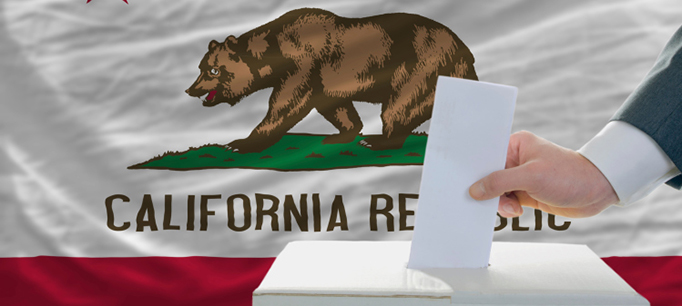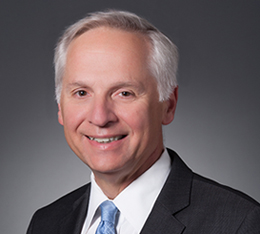With the release of the official Statement of the Vote on Friday, the 2016 California primary is now in the history books. The final tally by the Secretary of State offers many new insights for those of us who closely follow elections and polling in California. This year’s results deserve a particularly close look because of the extraordinary presidential primaries and the first-ever top-two primary for an open US Senate seat.
My colleague Eric McGhee has provided an excellent analysis of primary turnout and the outcomes of top-two legislative district races in two earlier PPIC blog posts. I’m going to focus on some trends that caught my attention in the final numbers regarding the presidential primaries, the top-two US Senate primary, the state ballot measure, voter engagement, and turnout in key regions.
- Presidential primaries. Secretary Hillary Clinton (2.75 million) and US Senator Bernie Sanders (2.38 million) were the top-two vote-getters in the state’s presidential primaries. These two Democrats had much more support in their party’s open primary than businessman Donald Trump (1.67 million) had in a closed Republican primary with no active opposition. In addition to facing a sizeable disadvantage in voter registration (45% Democrat, 27% Republican), the presumptive Republican nominee starts the fall election season with one million fewer voters in the state’s primary than the presumptive Democratic nominee. For Republicans, this raises questions about their presidential selection process and whether to have an open primary in the future that invites independent voters to participate. For Democrats, the immediate issue is how many of those devoted, young Sanders supporters will show up to vote this fall.
- US Senate top-two primary. Attorney General Kamala Harris won more votes (3.00 million) in the primary for the open US Senate seat than Clinton did at the top of the ballot. US Representative Loretta Sanchez finished a distant second (1.42 million) to Harris, setting up the first single-party race for US Senate in the top-two era. As a group, the 12 Republican candidates received more votes (2.15 million) than the second-place Democratic finisher. For Republicans, this raises questions about future strategies to ensure that their party’s voters have a candidate who can qualify for a top-two spot in November. And the question of how many Republicans will opt out of voting for a US Senator this fall will ultimately affect both parties.
- State ballot measure. Proposition 50 was the biggest vote-getter (5.60 million votes, 76% yes) on the June ballot. A byproduct of recent political scandals, it allows the legislature, with a two-thirds vote, to suspend members without salary and benefits. The legislature placed it on the June ballot with bipartisan support. Proposition 50 received scant media mention and little organized opposition. Its success is consistent with the historically high pass rate for legislative ballot measures found in a recent PPIC report. This trend bodes well for state bonds to fund parks and housing that the legislature may place on the ballot in the fall. Citizens’ initiatives and referenda have been moved to the November general election, and these types of state propositions have a much lower pass rate. That means voters face a cluttered ballot this fall that includes 14 citizens’ initiatives, two legislative initiatives, and one referendum, in addition to local measures. How many will voters decide are worthy of their interest and support?
In Los Angeles and two of the state’s fastest-growing areas, turnout among registered voters was lower than the state average.
- Voter engagement. There was a surge in online voter registration as Californians waited for their say in the presidential primaries. Voter engagement was a welcome development after primary turnout reached a new low in June 2014 (4.46 million, 25% registered voters, 18% eligible adults). Turnout this June (8.55 million, 47.7% registered voters, 34.5% eligible adults) reflected a turnaround, although it was well short of the record-setting February 2008 presidential primary (9.07 million, 58% registered voters, 40% eligible adults). Turnout was probably depressed by two events: the elimination of Trump’s competition weeks earlier and the declaration on the day before the primary that Clinton was the presumptive Democratic nominee. Once again, there will be questions about whether it’s in California’s best interests to vote at the end of the primary season in the presidential sweepstakes.
- Turnout in key regions. Five major counties had lower registered voter turnout than the state average: Los Angeles (41%), Fresno (41%), Kern (41%), Riverside (44%), and San Bernardino (43%). Five less populous counties in the Central Valley also had below-average turnout (41% Kings, 42% Merced, 42% San Joaquin, 44% Stanislaus, 45% Tulare). Moreover, fewer than one in three eligible adults voted in the primary in all 10 of these counties. In sum, these are troubling trends in the state’s most populous county (Los Angeles) and its two fastest-growing areas (the Central Valley and Inland Empire). Are there practical impediments to voting in these regions or is this a symptom of a deeper civic malaise? Until they are fully addressed, these regional disconnects will seriously limit the size and diversity of the state’s electorate.
The 2016 primary results point to several trends to watch in the November general election and beyond. Furthermore, the issues that surfaced this June will likely have longer-term reverberations on the primary process and civic engagement going forward.
At PPIC, the race for US Senate stands out as uniquely worthy of public attention. We invited the two candidates to participate in a conversation with me about the future of California on September 16. Stay tuned for more information about whether the candidates accept our invitation and how you can attend or watch this PPIC event.


